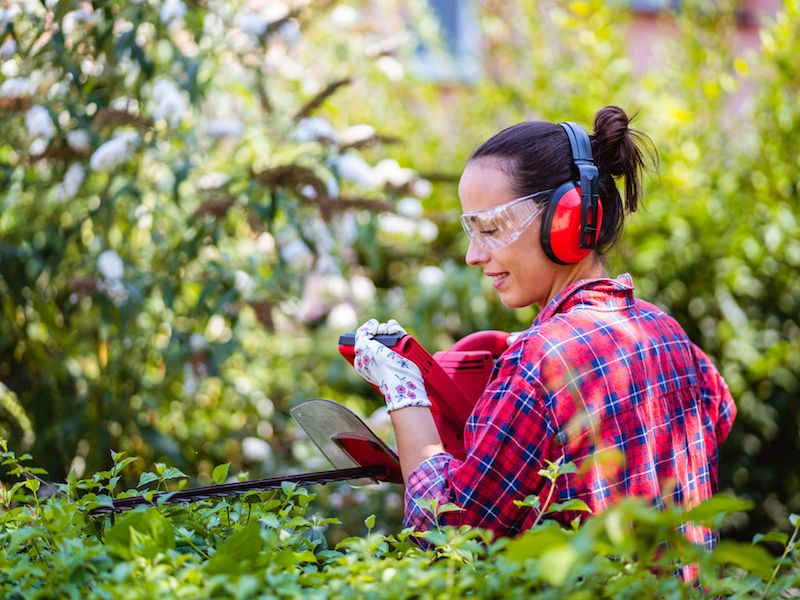
Safeguarding your hearing is similar to eating right. It’s hard to know where to begin even though it sounds like a good idea. If there aren’t any apparent noise risks and you don’t think your environment is especially loud, this is especially true. But day-to-day life can put stress on your ears and your senses, so practicing these hearing protection tips can help maintain your auditory acuity.
The more you can do to slow down the deterioration of your hearing, the longer you’ll be able to enjoy the sounds around you.
Tip 1: Wearable Ear Protection
Using hearing protection is the most practical and basic way to safeguard your ears. This means that diminishing loud and damaging sound is a basic step you should take.
For many people, this will mean utilizing hearing protection when it’s required. Two basic forms of protection are available:
- Ear Plugs, which are placed in the ear canal.
- Ear Muffs, which are placed over the ears.
Neither form of hearing protection is inherently better than the other. Each style has its positive aspects. Your choice of hearing protection should, most importantly, feel comfortable.
Tip 2: When Sound Becomes Harmful, be Aware of It
But when to use hearing protection is the question. Noise that is painful is commonly considered harmful. But in reality, noise can begin to damage your hearing at a much lower volume than you might expect. The sounds of traffic, as an example, are loud enough to begin injuring your hearing after only a couple of hours. Recognizing when sound becomes harmful, then, is a vital step in protecting your hearing.
The following threshold is when sound becomes harmful:
- 85 decibels (dB): After around two hours this level of sound is harmful.This is the volume of sound you’d expect from a busy city street or your hairdryer.
- Over 100 dB: Your hearing can be very quickly damaged by this. Injury is done in about thirty seconds with anything over this limit. As an example, rock concerts and jet engines will damage your ears in 30 seconds.
- 95-100 dB: This is about the noise level you’d get from farm equipment or the normal volume of your earbuds. After around 15-20 minutes this volume of noise becomes dangerous.
Tip 3: Use Your Phone as a Sound Meter
Now that we have a general concept of what levels of noise could be dangerous, we can take some steps to ensure we limit our exposure. But in real life, it can be challenging trying to measure what is too loud and what isn’t.
That’s where your smartphone can become a handy little tool. Sound meter apps exist for every type of smartphone.
Having a live sound meter with you will help you evaluate everything you’re hearing in decibels, so you’ll have a far better concept of what hazardous levels really sound like in your everyday life.
Tip 4: Be Mindful of Your Volume Settings
The majority of people today listen to music via their phone or smart device, and they usually use earbuds while they do it. This sets up a dangerous scenario for your hearing. Your ears can be considerably harmed if you set your earbuds to high over a long period of time.
That’s why safeguarding your hearing means keeping a sharp eye on your volume management. You should never increase the volume to drown out sounds somewhere else. in order to make sure that volume doesn’t get too high, we suggest using volume configurations or app settings.
Earbud use can become something of a negative feedback loop if your hearing begins to wane; in order to make up for your declining hearing, you may find yourself constantly increasing the volume of your earbuds, and in the process doing more damage to your hearing.
Tip 5: Have Your Hearing Checked
You might think that having a hearing test is something you do only when your hearing starts to decline. Without a baseline to compare results to, it’s not always easy to identify a problem in your hearing.
Scheduling a hearing screening or exam is a good way to obtain data that can be used for both treatment and diagnostic purposes, ensuring that all of your future hearing (and hearing protection) decisions have some added context and information.
Keep an Eye on Your Ears
In an ideal world, protecting your ears would be something you could do continuously without any difficulty. But there are always going to be obstacles. So safeguard your ears when you can, as often as possible. Also, get regular hearing exams. Hopefully, these guidelines will give you a good start.